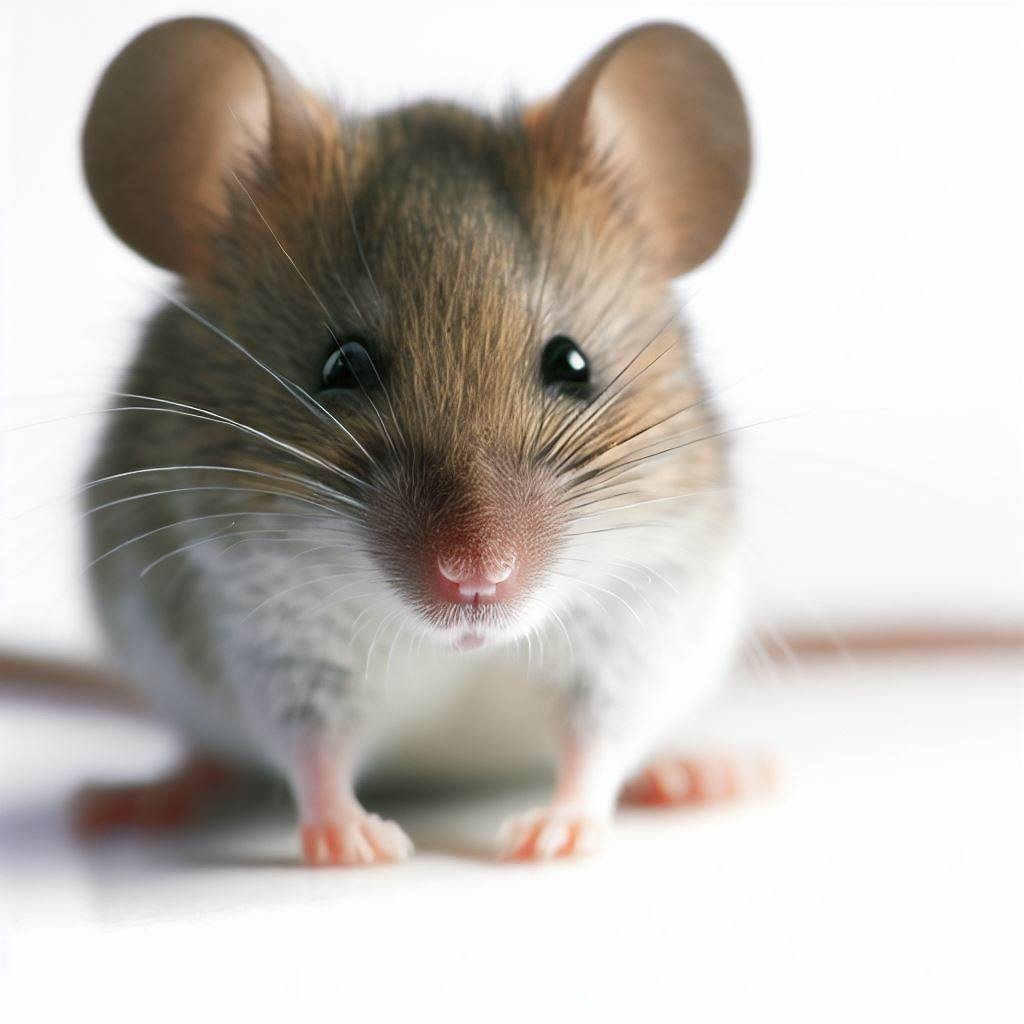Everything about Rodents

| Everything About RODENTS | |
|---|---|
| Feature | Description |
| Types | Rats, mice, squirrels, hamsters, porcupines, beavers, guinea pigs, etc. |
| Size | Range from small (like a house mouse) to large (like a beaver). |
| Common Habitats | Forests, urban areas, fields, burrows, and human-made structures. |
| Diet | Varies by species - grains, nuts, fruits, plants, and some even consume insects or small animals. |
| Behavior | Many species are nocturnal, some are solitary while others are social, known for gnawing due to ever-growing incisors. |
Dissecting Rodents Anatomy
Rodents are a vast and diverse group of mammals characterized by a pair of continuously growing incisors in both their upper and lower jaws. This group includes animals like rats, mice, squirrels, beavers, hamsters, and many more. Here’s a general overview of rodent anatomy:
Head and Facial Region
Body
Limbs
Internal Systems
Adaptations
Head and Facial Region
- Incisors: One of the defining features of rodents. They have sharp, chisel-like front teeth that grow continuously. These teeth are used for gnawing and are kept sharp by constant wear.
- Molars: Behind the incisors, they have a gap (called a diastema) before their molars, which are used for grinding food.
- Eyes: Depending on the species, the eyes can be small (as in many rats and mice) or large (as in nocturnal or burrowing species).
- Ears: Can be large or small, again depending on the species and its habitat. Many desert rodents, for instance, have large ears which aid in thermoregulation.
- Whiskers (Vibrissae): These are tactile hairs that help rodents sense their environment, particularly useful in the dark or tight spaces.
Body
- Fur: Varies considerably among species in terms of color, length, and texture.
- Tails: Many rodents have long tails, which can be prehensile, as in some species of rats, or bushy, as in squirrels. The tail often plays a role in balance, communication, and, in some species, thermoregulation.
Limbs
- Forelimbs: Typically with four to five digits, used for grasping, digging, or climbing.
- Hind Limbs: Often more muscular than the forelimbs, especially in species adapted for jumping, like kangaroo rats.
Internal Systems
- Digestive System: Many rodents have a cecum, a pouch at the beginning of the large intestine, which plays a role in the fermentation of plant materials. Some rodents practice coprophagy, consuming their feces to extract more nutrients from their food.
- Reproductive System: Rodents are known for their high reproductive rates. Many species can reproduce frequently and produce multiple offspring in each litter.
- Circulatory and Respiratory Systems: Similar to other mammals with a heart that has two atria and two ventricles, and lungs for gaseous exchange.
- Nervous System: Rodents have a brain, spinal cord, and a complex nervous system. Their brain-to-body size ratio can be quite large, especially in species known for problem-solving and complex behaviors.
Adaptations
- Cheek Pouches: Some rodents, like hamsters, have cheek pouches, which they use to carry food back to their burrows.
- Aquatic Adaptations: Species like beavers have webbed feet, specialized fur, and a flattened tail for swimming.
- Burrowing Adaptations: Many rodents are fossorial, meaning they live primarily underground. Such species might have strong forelimbs for digging and a compact body shape.
How Do I Get Rid Of Rodents?
To combat a rodent problem, ensure that food sources are stored securely and potential entry points are sealed. Regular cleaning and eliminating nesting spots are also crucial.
If the rodent issue persists or becomes extensive, it’s best to seek professional Rodent Control services. These experts provide targeted and effective strategies, ensuring both immediate relief and prevention of future infestations.
What are the most common types of Rodent
in Canada?
Canada is home to several species of rodents, but some are more commonly found or noticed due to their interactions with humans, agricultural areas, or urban settings. Here are some of the most common rodents found in Canada:
- House Mouse (Mus musculus)
- Norway Rat (Rattus norvegicus)
- Deer Mouse (Peromyscus maniculatus)
- Black Rat (Rattus rattus)

House Mouse

Norway Rat

Deer Mouse

Black Rat
Call us for a Free Rodents Inspection
What are the characteristics of House Mouse?

| Characteristics of House Mouse | |
|---|---|
| Feature | Description |
| Size | Typically 2.5 to 3.8 inches (6.35 to 9.65 cm) in length, with a tail length of 2.4 to 4 inches (6 to 10 cm). |
| Color | Light brown to dark gray with lighter-colored bellies. |
| Shape | Small, slender rodent with a pointed nose, large ears, and long, thin tail with fine hair. |
| Habitat | While they can live outdoors, house mice prefer to inhabit structures like houses, barns, and sheds. They build nests using shredded material and are good climbers, often found in hidden areas within homes. |
| Reproduction | House mice breed rapidly. A female can have 5 to 10 litters of about 5 or 6 young each year. Newborns become capable of reproducing at around 6 weeks of age. |
What are the characteristics of Norway Rat?

| Characteristics of Norway Rat | |
|---|---|
| Feature | Description |
| Size | Typically 7 to 9.5 inches (18 to 24 cm) in body length, with a tail length of 6 to 8 inches (15 to 21 cm). |
| Color | Brown or grey with scattered black hairs; underside is grey or yellowish-white. |
| Shape | Bulky rodent with a blunt nose, small ears, and a thick, slightly shorter tail compared to its body length. |
| Habitat | Often found in basements, sewers, and other lower ground structures. Prefers to stay close to food sources and tends to burrow for nesting. |
| Reproduction | Females can produce 3 to 12 litters per year with each litter containing 5 to 12 young. Newborns can start reproducing as early as 3 months old. |
What are the characteristics of Deer Mouse?

| Characteristics of Deer Mouse | |
|---|---|
| Feature | Description |
| Size | Typically 2.75 to 4 inches (7 to 10 cm) in body length, with a tail length of 2 to 5 inches (5 to 13 cm). |
| Color | Upper body is brown or gray with white underbelly and feet. Its tail is bi-colored: darker on top and lighter underneath. |
| Shape | Small rodent with large ears, large black eyes, and a slender body. |
| Habitat | Found in diverse habitats such as forests, grasslands, and cultivated fields. Often nests in burrows, tree holes, or buildings. |
| Reproduction | Females can have 2 to 4 litters per year, with each litter containing 3 to 5 young. Offspring can reproduce within a couple of months of birth. |
What are the characteristics of Black Rat?

| Characteristics of Black Rats | |
|---|---|
| Feature | Description |
| Size | Typically 13 to 18 cm in body length, with a tail length of 15 to 22 cm. |
| Color | It varies: can be black, gray, or brown with a lighter underbelly. |
| Shape | Slender body with a pointed snout, large ears, and large eyes. |
| Habitat | Prefers higher places like attics, ceilings, and trees. Can be found in ships, warehouses, and residential areas. |
| Reproduction | Females produce 3 to 6 litters a year with 5 to 10 offspring per litter. Offspring reach reproductive maturity around 3 months of age. |
Call us for a Free Rodents Inspection
Top Tips To Prevent Rodent Infestations: Essential Guide
- Seal Entry Points:
Regularly inspect the exterior of your home or business for gaps, cracks, and holes. Pay particular attention to areas where utilities and pipes enter. Seal any potential entry points using caulk, steel wool, or metal sheeting. Remember, mice can squeeze through spaces as small as a dime! - Proper Waste Management:
Ensure that trash is stored in containers with tight-fitting lids. Keep garbage disposal areas clean and dispose of waste regularly. Avoid leaving food waste in open spaces, and consider using a compost bin with a sealed lid. - Food Storage:
Store food, especially grains, in airtight containers made of thick plastic or glass. This applies to both human and pet food. Keep pantry areas clean and free from crumbs or spilled food. Regularly clean under kitchen appliances. - Landscape Maintenance:
Keep grass and vegetation near your property trimmed. Overgrown landscapes can provide shelter and nesting places for rodents. Also, store firewood at least 20 feet away from your home and five inches off the ground. - Regular Inspection and Cleanliness:
Regularly inspect dark and secluded areas of your property, such as attics, basements, and crawl spaces, for signs of rodent activity. Look for droppings, gnaw marks, or nesting materials. Maintain cleanliness in these areas and remove potential nesting materials like cardboard or old rags.
Frequently Asked Questions about Rodents:
Common signs of rodent activity include the presence of droppings, gnaw marks on food packaging or structures, scratching or scampering noises in walls or ceilings, and visible rodent tracks or tail marks. You might also find nesting materials like shredded paper, fabric, or plant matter. In some cases, you might even detect an unpleasant odor, especially in enclosed spaces.
Yes, rodents can pose significant health risks to humans. They can spread various diseases either directly, through feces, urine, and bites, or indirectly through fleas, ticks, and mites that have fed on an infected rodent. Some of the diseases they can transmit include Hantavirus, Salmonellosis, and Leptospirosis. Additionally, their constant gnawing can damage structures, electrical wiring, and plumbing, leading to potential fire hazards or water damage.
Mice and rats have distinct differences. Generally, adult mice are smaller, measuring 3 to 4 inches in length (excluding the tail), while rats can be much larger, often measuring 7 to 9 inches in length (excluding the tail). Mice tend to have larger ears relative to their heads compared to rats. Their droppings also differ; mouse droppings are small and pellet-like, whereas rat droppings are larger and often have tapered ends.
